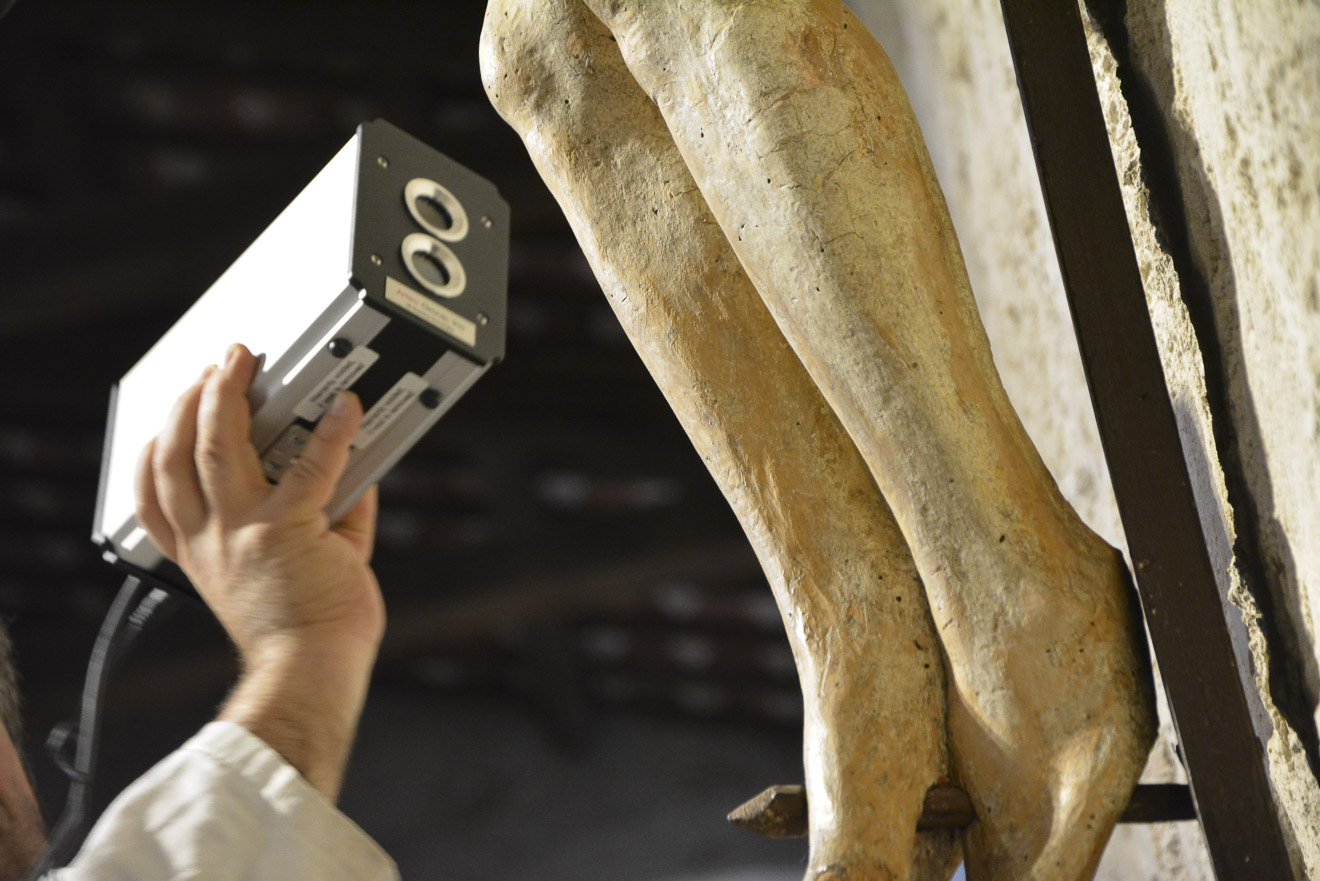The abbey of San Clemente a Casauria is in the province of Pescara. The extraordinary crucifix inside dates to mid-1400. This work of art has been examined upon request of the Priest of Pesconsanesco.
As a 2.0 skilled woodworker, Francesco Carullo was asked to reproduce the ancient Cross. Taking advantage of advanced technology and being supported by his own expertise, Carullo focused on each single step during the working process. Having received formal permission of Cultural Heritage Competent authority, he carried on examining the Christ using 3D scanning technology. 3D scanners produced point clouds, then all scans were lined up in order to get a faithful 3D reproduction of the original model. The software was then ready to draw up point clouds and generate complex triangles also known as mesh. Modelling followed and the subsequent reconstruction showed deterioration of the original work due to the passage of time, resulting in some parts missing. To perform properly, human anatomy has been taken into account as well as the history of sculpture in 15th century.
Meanwhile, Carullo and his crew examined the right placing of artwork inside the Sanctuary of Pescosansonesco: according to previous studies, the Holy Cross had to be placed in the niche behind the altar, where it is still possible to catch a glimpse of the rocky face nearby. Once developed, this project was imported into CAD CAM software. This program makes it possible to realize products for CNC machinery, which generate more complex products than those developed according to ISO CODE on board application. The figure of the Christ underwent a whittling down process leading to a finished form both on front and back side. The linear sequence to sequence alignment has provided information useful for getting the right dimensions and for calculating the exact amount of how much wood was needed to carry on. When it came to selecting wood we chose steamed beech Paul Maier. Once CNC was finished, the entire work was transferred to the laboratory of an expert painter hired to perform decoration work. Having examined 15th century paintings and sculptures, the craftsman managed to get its natural skin tone back.
The work was then completed with a hand forged wrought iron crown of thorns. Jesus’ fastening to the cross was the next step. It was installed in the sanctuary.











